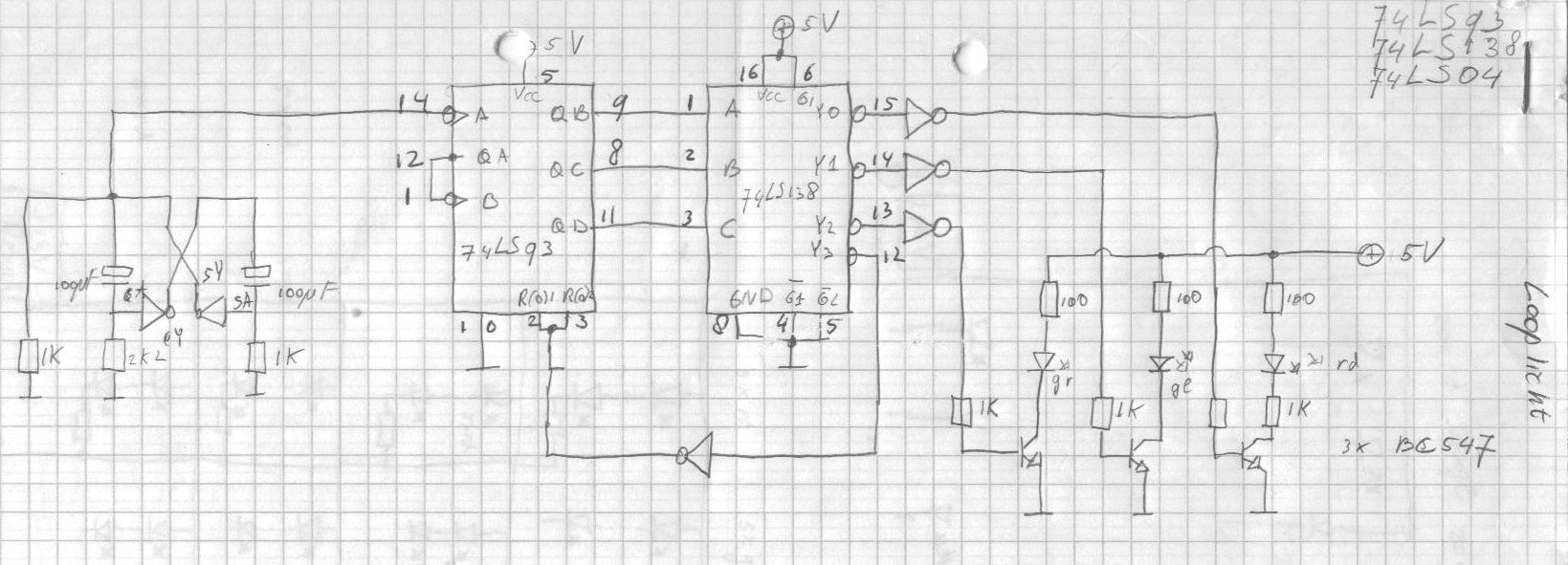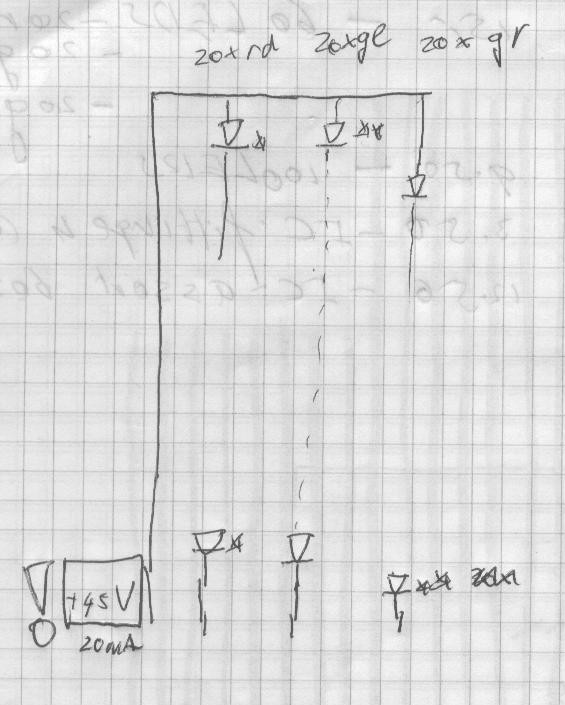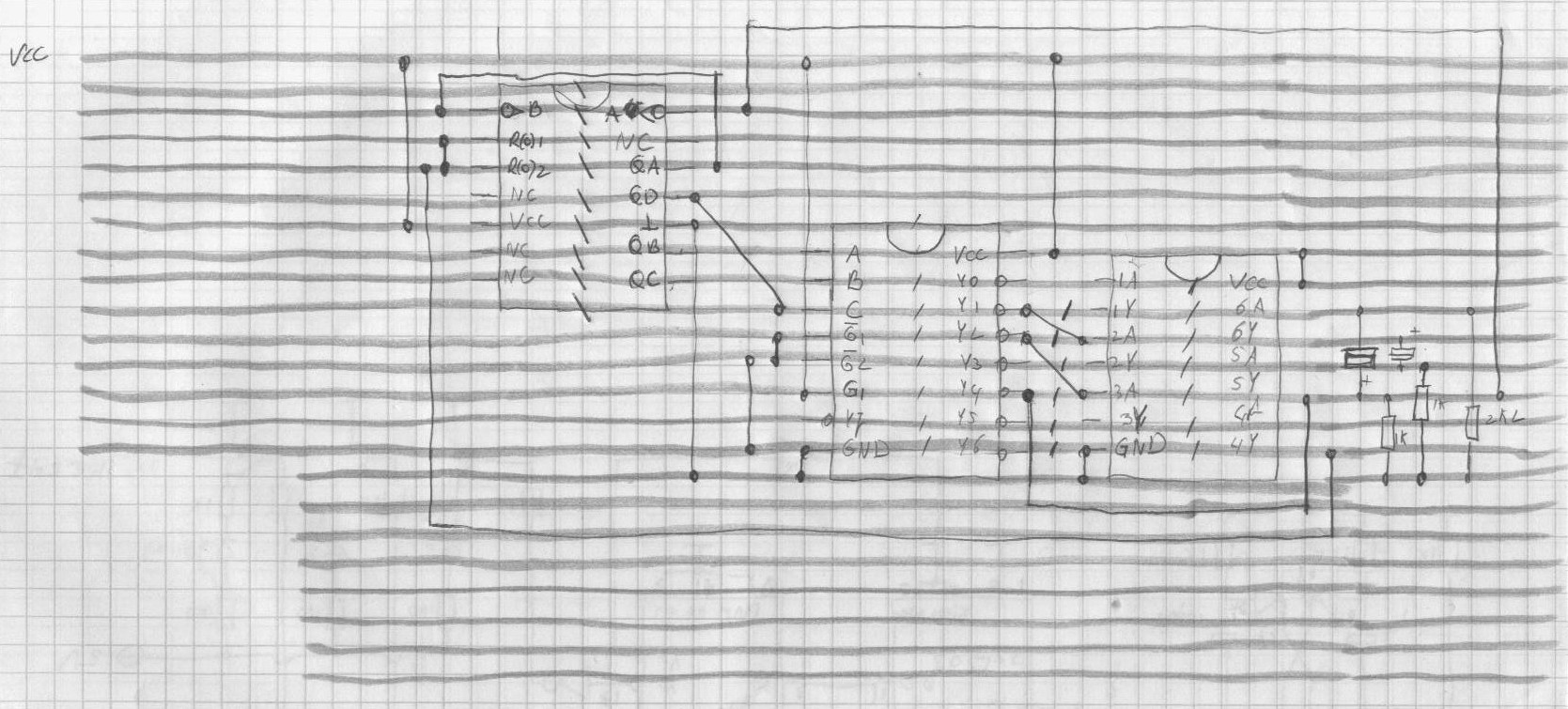This is probably one of my oldiest projects. When I was a kid I was always intrigued by the runing lights used in stores and shopiing malls. I quickly came to the conclusion that I should be able to build something like that myself but of course better...
So I decided to do it with LEDS insteds of normal light bulbs that wear out quit quickly and and also use different colors. Since I was probably around 12 or 15 years old and didn;t have a lot of experience and I looked into various magazines and books. I looked at all the parts I had collected over the years, parts scrounged from old cashier machines, old radios and old TVs. Putting it all together I came to this circuit:

As you can see, it is actually quit simple but neverthless I was proud that at my age I managed to accompish something 'difficult like this' :-). On the left side are two inverters that are used as a low frequency oscillator. Much like a normal transistor based astable multivibrator. Th eresistor completely to left is used to pull the signal hard to ground. The 74LS93 ring-counter is then used to count binary. The first section (output Qa) is used as a divide by two and it soutput is connected to the 3 bits binary counter. The output is then fed to the 74LS138 a simple 1-to-8 decoder. Output 1 to 3 is used to switch the LEDS on and off. The fourth output is used to reset the binary counter to zero.
At that time I didn't have an idea about speed so I was really happy to notice that the circuit resetted so fasted that you didn't see all the light turn off :-).
Since all outputs are inverted, three of the remaining inverters are used to invert the signal from the 74ls138 decade counter and to switch the transistors on and off. The collector out put of the transistor is then connected to the LEDs. After some fiddling with resistors and capcitors in the oscillator section I managed to get it all to work.

And actually that is how far I've got. As you can see above, I did a setup for the powersupply. However, the main question was the voltages I should have....


As you can see I came to the conclusion I eilther should have 80V @ 20 mAmps or I should have something like 15V at 80mAmps. Nowadays, I wouldn't consider it to be a big deal anymore but at that time 80Volts! or at least 80mAmps and then 3 times 4 wires in the tube, were should I get them from?
To buy some time, I decide to draw up the possible print layout for the circui. After weeks of puzzling for my first layout, this is what I came up with:

Not making a choice is also making a choice and that also applied in this cases. Christams came and went without homebuild running light. Soon the breadboard was freed up with the fierce promise to myself first to try something else and then rebuild it once I found teh right answer.. Yeah right... :-)
Have fun
Cor